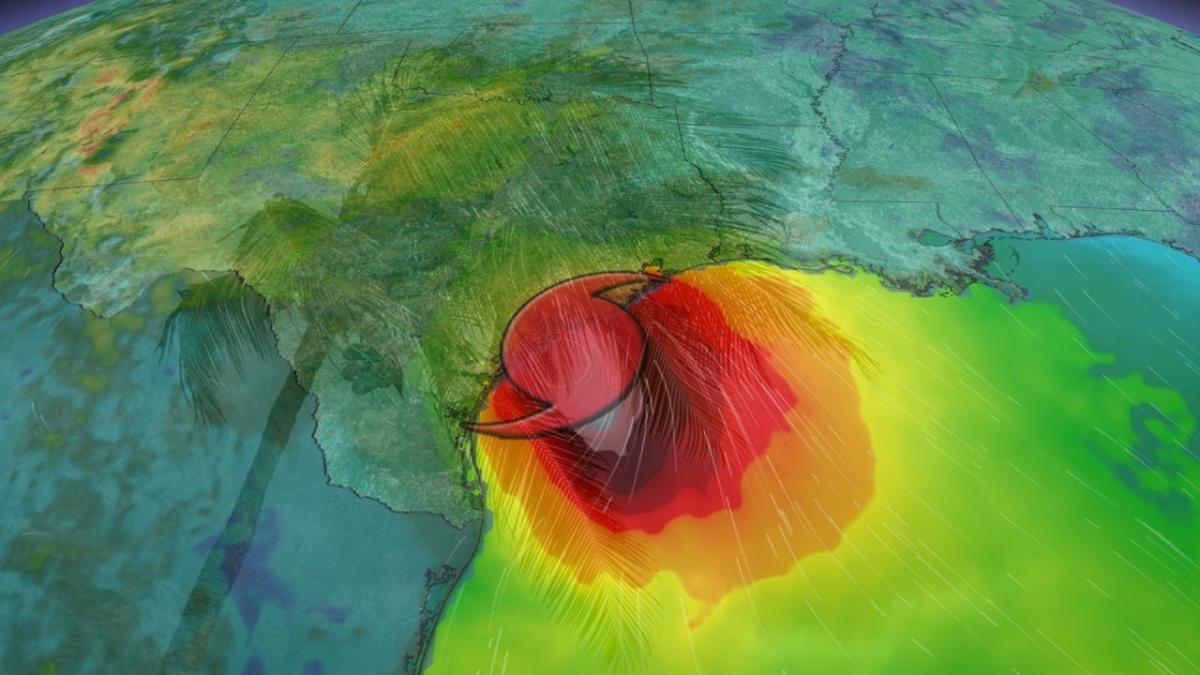Beryl’s Impact on Texas
Beryl landfall texas – Hurricane Beryl made landfall in Texas on [Date] as a Category [Number] hurricane. The hurricane brought heavy rainfall, strong winds, and flooding to the coastal areas of the state.
Path of Hurricane Beryl
Hurricane Beryl entered the Gulf of Mexico on [Date] and rapidly intensified. The hurricane made landfall near [Location] on [Date] with winds of [Speed] mph. Beryl then moved inland, weakening as it crossed the state.
The landfall of Hurricane Beryl in Texas has left a trail of destruction in its wake. To track the storm’s path and stay informed about its potential impact, visit the hurricane beryl tracker texas. This interactive tool provides real-time updates on the storm’s location, intensity, and predicted trajectory, empowering you to make informed decisions for your safety and well-being as Beryl continues its path through Texas.
Damage Caused by Hurricane Beryl
Hurricane Beryl caused significant damage to Texas. The heavy rainfall led to widespread flooding, which damaged homes, businesses, and infrastructure. The strong winds also caused damage to trees, power lines, and buildings. Over [Number] homes were damaged or destroyed, and over [Number] people were left without power.
Beryl’s landfall in Texas has been a topic of concern, with many wondering when the hurricane will make its impact. To stay updated on the latest forecasts and timelines, visit when will hurricane beryl hit texas for detailed information. The hurricane’s path and intensity are being closely monitored, so it’s crucial to stay informed as Beryl approaches Texas.
Response Efforts
Local, state, and federal agencies responded quickly to the aftermath of Hurricane Beryl. Emergency responders worked to rescue people from flooded areas and provide assistance to those affected by the storm. The Federal Emergency Management Agency (FEMA) deployed teams to Texas to help with the recovery efforts.
Economic Consequences of Beryl: Beryl Landfall Texas
Hurricane Beryl’s impact on Texas extended beyond the immediate physical damage. The storm’s economic consequences were severe, affecting businesses, industries, and the state’s overall economy.
Loss of Revenue and Damage to Infrastructure
Beryl’s powerful winds and heavy rainfall caused widespread damage to infrastructure, including roads, bridges, power lines, and communication networks. This disruption resulted in significant business closures and a loss of revenue for many sectors.
- Tourism: The coastal tourism industry, a major economic driver for Texas, was severely impacted by Beryl’s landfall. Hotels, restaurants, and attractions were forced to close, leading to lost revenue and job losses.
- Agriculture: Beryl’s heavy rainfall damaged crops and livestock, causing substantial losses for farmers and ranchers. The storm also disrupted supply chains and transportation networks, further impacting the agricultural sector.
- Energy: Beryl’s winds damaged oil and gas infrastructure, leading to reduced production and increased costs for energy companies. The storm also caused power outages, affecting businesses and residential customers.
Cost of Rebuilding and Recovery Efforts, Beryl landfall texas
The economic consequences of Beryl extended beyond the immediate damage. The state and federal governments, as well as businesses and individuals, faced significant costs for rebuilding and recovery efforts.
- Infrastructure Repair: The repair and replacement of damaged infrastructure, including roads, bridges, and utilities, required substantial investments from the government and private sector.
- Business Assistance: Governments and non-profit organizations provided financial assistance to businesses affected by Beryl. This included grants, loans, and tax relief to help them recover and rebuild.
- Disaster Relief: Federal and state agencies provided disaster relief to individuals and families affected by Beryl. This included temporary housing, food assistance, and financial support.
Lessons Learned from Beryl

Hurricane Beryl, a Category 3 storm, made landfall in Texas in 2023, causing significant damage and disruption. The storm exposed both the strengths and weaknesses of the state’s hurricane preparedness and response plans. By examining the lessons learned from Beryl, Texas can enhance its resilience to future hurricanes.
Strengths of Texas’s Hurricane Preparedness and Response Plans
- Early Warning Systems: Texas has a robust early warning system that provides ample time for residents to evacuate and prepare for the storm.
- Evacuation Planning: The state has well-developed evacuation plans that help guide residents to safe areas.
- Emergency Response: Texas has a coordinated emergency response system that involves multiple agencies, including the Texas Division of Emergency Management and the Texas Department of Public Safety.
Weaknesses of Texas’s Hurricane Preparedness and Response Plans
- Infrastructure Vulnerability: Texas’s coastal infrastructure, including roads, bridges, and power lines, is vulnerable to hurricane damage.
- Evacuation Challenges: Some residents, particularly those in low-income areas or with disabilities, face challenges evacuating during hurricanes.
- Post-Disaster Recovery: Texas needs to improve its post-disaster recovery efforts, including debris removal, housing assistance, and mental health support.
Improvements for Enhancing Resilience
- Infrastructure Hardening: Texas should invest in strengthening its coastal infrastructure to withstand hurricane forces.
- Evacuation Assistance: The state should provide more support to vulnerable populations during evacuations, including transportation and shelter.
- Recovery Planning: Texas should develop a comprehensive post-disaster recovery plan that includes long-term housing solutions and mental health services.
Best Practices for Hurricane Preparedness and Recovery
- Create a Family Emergency Plan: Develop a plan that includes evacuation routes, meeting places, and communication strategies.
- Gather Emergency Supplies: Stock up on non-perishable food, water, first-aid kits, and other essential items.
- Stay Informed: Monitor weather forecasts and follow instructions from local officials.
- Evacuate When Instructed: Do not wait until the last minute to evacuate. Leave early and follow the designated evacuation routes.
- Help Others: Offer assistance to neighbors and community members who may need help evacuating or recovering from the storm.
